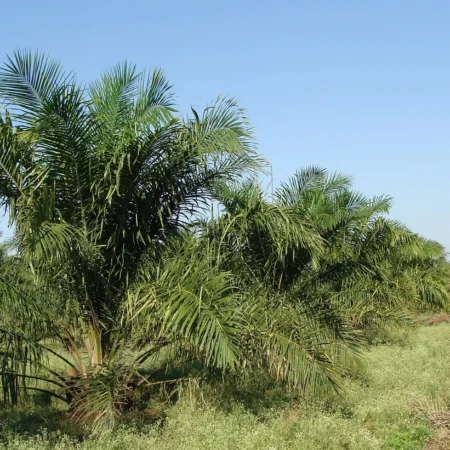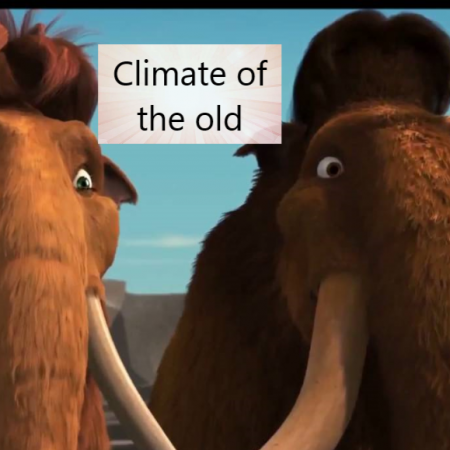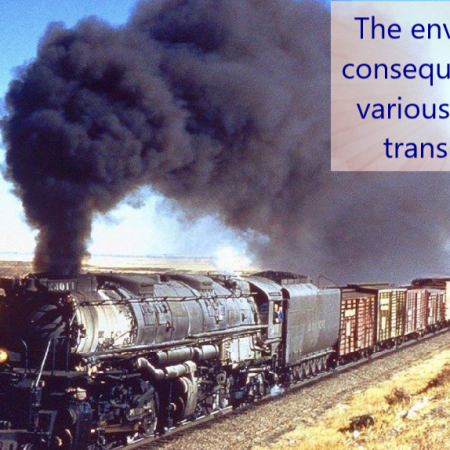Solid Waste Management, Characterization And Disposal In The Buea Municipality
Table of Contents
2.3 Data Collection and Analysis.
3.1 Dumpsite Characterisation.
3.2 Household Personal information.
3.3 Resident Waste Management Practices.
3.4 Residents’ perceptions and attitudes towards waste management
3.5 Reasons for Illegally Dispose of Streets.
3.6 Households satisfaction with waste collection service delivery.
3.7 Households Opinion on service Provider and Willingness to Pay for Improved services.
4.0 Conclusion and Recommendations.
Abstract
Waste is an inevitable consequence of industrialization and urbanization. Generally, cities in the developing world face challenges in solid waste management and the situation in Buea municipality is not different. The study aimed to identify and map out the location of dumpsites using the GPS in the Buea municipality, characterize the dumpsites and identify public concerns and perceptions of these dumpsites in the Buea Municipality.
Using a GPS, the study randomly sampled 40 illegal dumpsites and using a structured questionnaire sampled 160 households living within these dumpsites. The study findings revealed that 42.5% were located at road sites, 32.5% were found on vacant land, 17.5% were spotted beside smaller water bodies and 7.5% were located on the valley side.
The average distance of the dumpsite to the nearest neighbourhood is 0.5m. 80.0% of the dump were spotted with scavengers’ birds and became a breeding ground for mosquitoes. Findings also, revealed that the majority of households illegally dump waste on these illegal dumps site because of Inadequate collection bins, lack of dumpsites in some regions, and long-distance from dumpsites.
Residents express their unsatisfactory level of service delivery in their neighbourhood and propose to pay a token of $0.9 (<5000FRS) for improved solid waste management in the municipality. It was suggested that a waste management service fee should be introduced where people can pay for a new and better service provider.
Keywords: Solid waste management, Dumpsites, Willingness to pay
1.0 Introduction
Throughout the world, human gatherings and activities often lead to the generation of waste. According to the United Nations Population Fund, UNFPA (2008), an estimated number of 3.3 billion persons lives in towns and cities and this population is predicted to increase to about 5 billion persons by 2030. The high migration of persons from rural areas to urban often leads to high consumption and generation of solid waste which when often not properly manages led to indiscriminate disposal (Kretchy et al., 2019).
Countries with a fast-growing population face serious waste disposal problems mainly because the rate of waste generation is often not matched by an improvement in the management and disposal of waste materials. Solid waste generation in households and communities is a result of human activities (Zurbugg, 2002).
Cameroon like many other African countries faces the problem of poor waste management practised. Manga et al. (2007) discovered that solid waste management services are rudimentary. The practised is primarily concerned with the collection and dumping of waste without proper management methods. This form of management is due to factors such as inadequate financial resources, low levels of law enforcement as well as poor governance and lack of human resources.
Moreover, current regulations do not adequately address waste handling or disposal. Duplication of duties and obligations between state entities and local governments contributes to inefficient waste management policy and documentation implementation (Manga et al., 2007).
In most developing countries, solid wastes are always disposed of at dumpsites, because it is the simplest and cheapest method of disposing of waste (Barret and Lawler, 1995). Rushbroke (2001) describes open dumping of municipal solid waste (MSW) as a primitive stage of waste disposal, practised by three fourth of countries and territories around the world.
Open dumps are major causes of environmental degradation and public health concerns in many developing countries including Cameroon. These waste dumps may contain a mixture of general waste and toxic, infectious or radioactive waste and are susceptible to burning and exposure to scavengers.
Open dumping of waste presents a real threat to the environment and is commonplace in developing countries like Cameroon. When waste decomposes, it poses health risks to those who live nearby due to the inconvenient location of certain waste dumps. It contains leachate, which can infiltrate local water sources and contaminate drinking water. Uncontrolled dumps also release gases that are explosives and flammable.
Buea, like most African cities and municipalities, faces several difficulties in measuring the rising waste. Collection and disposal have been and are still major problems in this municipality.
Before the partnership with HYSACAM a private company, the Buea council couldn’t manage the volume of waste generated on daily basis. The Buea Municipal Council’s hygiene and sanitation department have fought waste management in the municipality to no avail.
Due to the current outbreak of the Anglophone political crisis since 2016, most of the streets of Buea are transformed into waste parks accompanied by negative environmental impacts with adverse environmental and health risks if waste is improperly disposed of.
Assessing the relative health and environmental hazards posed by the dumpsites existing throughout the developing countries could help prioritize, plan and initiate dumpsites rehabilitation (Kurian et al., 2005). Therefore, the objectives of this study were to identify and map out the location of dumpsites using the GPS in the Buea municipality, characterize the dumpsites and identify public concerns and perceptions of these dumpsites in the Buea Municipality.
2.0 Methodology
2.1 Study Area
The area under study is the semi-urban township of Buea. It has a surface area of 7000km². The Latitude of Buea is 4.159302, and the longitude is 9.243536 (Bate, 2020). Buea, the seat of the University of Buea, is a small historic town located at the foot and eastern slopes of Mount Cameroon, the highest mountain in the west and central Africa. The location of Buea at the foot of Mount Cameroon and the proximity of the town to the Atlantic coast of Cameroon results in a humid climate.
The upper elevation of the town tends to be cold and cloudy, while lower elevations tend to be much warmer and less humid. As in most of the rest of Cameroon, Buea experiences the dry and wet seasons. The dry season runs from November to February and the rainy season runs from March to October.
The average temperature is mild, between 230C and 250C. Buea Municipality is made up of several quarters and streets such as Molyko, Tarred and Untarred Malingo, Great Soppo, Small Soppo, Chief Streets, Mile 17, Muea, Mile 16, Boduma, Sandpit etc.
2.2 Research Design
The study adopted a mixed triangulation design, stratified random sampling, purposive and random sampling techniques to select households for this study. The study was quantitative and qualitative.
The quantitative involved collecting data on waste dumps while the qualitative aspects involved the use of a structured questionnaire to collect households’ opinions on solid waste management in the neighbourhood.
2.3 Data Collection and Analysis
The study employed the primary method of data collection which entailed the use of a structured questionnaire and a checklist observation guide. The researchers identified 40 illegal dumpsites within the municipality and with the help of a checklist data about dumpsites, characteristics were observed.
A global positioning system (Garmin eTrex 10) was used to collect coordinates of illegal solid waste dumps in Buea Municipality, through which a database was created and used to record coordinates for illegal solid waste collection points and their addresses in Buea Municipality.
Structured-questionnaire were used to sample 160 households that surround the selected dumpsites to provide information regarding waste management in their respective neighbourhood. SPSS (21.0) was used for the analysis of both quantification and qualification of data collected.
3.0 Results and Discussions
3.1 Dumpsite Characterisation
Table 1 and Table 2 presents the characteristics of the illegal waste dumpsites in the study area. Observation view revealed that dumpsite consist of food waste (50.0%), plastics (15.0%), papers (10.0%) and glass (5.0%).
This result is in line with the findings of Ogwueleka and Toochukwu. (2013) discovered that 60% of waste generated and collected in Nigeria is made up of organic waste.
Concerning the location of the dumpsites, the majority of 42.5% were located at road sites, 32.5% were found on vacant land, 17.5% were spotted beside smaller water bodies and 7.5% were located on the valley side.
The average distance of the majority dumpsite (77.5%) from the road was less than 0.5m while 60.0% of the dumpsite were 1-5m away from the nearest neighbourhood.
45.0% of the dumpsite was large with over 80% often spotted with scavengers’ birds and animals crawling on waste materials.
60% of the waste dump are often removed when overfilled while 40.0% is often burnt. 70.0% of the waste is managed by a private company called HYSACAM while 30.0% is often managed by the locals.
45.0% of the dumpsite carries municipal posters discouraging residents dumping of waste while 550% did not. This finding is similar to the findings of Latifah et al, (2009) who also discovered that uncontrolled waste dumps serve as breeding grounds for flies and scavengers.
Table 1. Identification of Type of waste present at Dumpsite
| Type of waste and % distribution | Plastics | 15.0 |
| Paper | 10.0 | |
| Food waste | 50.0 | |
| Glass | 5.0 | |
| Others | 6.0 |
Source: Field survey, (2020)
Table 2. Dumpsite Characteristics
| Characteristics | Response | Frequency | Percentage (%) |
| Location of dumpsite | Valley | 3 | 7.5 |
| Vacant land | 13 | 32.5 | |
| Roadside | 17 | 42.5 | |
| Stream | 7 | 17.5 | |
| The average distance from the road | < 0.5m | 31 | 77.5 |
| >0.5m | 9 | 22.5 | |
| Distance from nearest household | <1m | 10 | 25.0 |
| 1-5m | 24 | 60.0 | |
| >5m | 06 | 15.0 | |
| Size of dump | Small | 12 | 30.0 |
| Average | 10 | 25.0 | |
| Large | 18 | 45.0 | |
| Presence of municipal posters discouraging residents from dumping waste | Yes | 18 | 45.0 |
| No | 22 | 55.0 | |
| Presence of scavengers | Yes | 32 | 80.0 |
| No | 08 | 20.0 | |
| How is waste managed | Waste is removed | 16 | 40.0 |
| Waste is burned | 24 | 60.0 | |
| Who manages the dump | Residents | 12 | 30.0 |
| HYSACAM | 28 | 70.0 |
Source: Field survey, (2020)
3.2 Household Personal information
Table 3 presents the households’ personal information. The sex distribution of the sampled revealed that 62.5% of the residents were female while 37.5% were male. The age group with the highest count is 20-40years, accounting for 52.5% of the sample population while those above 56years accounted for 7.5%.
The mean age of the respondents is 30.5 years. The high number of youths in the municipality is attributed to the fact that Buea is a centre for university studies which composes of young adults of 20-40years of age. 42.5% of the residents have stayed in the municipality for 1-5years.
Most of the respondents have attained the Post High school/tertiary level of education, this implies that the majority of the respondents have acquired a high degree of education and thus were in a position to described their waste management practised in their neighbourhood. Income generated by the population was mainly by trade (25.0%) with a mean income class of 101,000-200,000XAF as accounted for by 35.9 of the respondents. The household size with the most frequency is 4-7 persons per household as accounted for 47.5%.
Table 3. Demographic Information
| Variable | Response | Frequency | Valid per cent |
| Gender | Male | 60 | 37.5 |
| Female | 100 | 62.5 | |
| Age | <20 years | 36 | 22.5 |
| 21-40 years | 84 | 52.5 | |
| 41-55 years | 28 | 17.5 | |
| 56 years and more | 12 | 7.5 | |
| Years of stay in the neighbourhood | < 1 year | 16 | 10.0 |
| 1-5 years | 68 | 42.5 | |
| 6-10 years | 20 | 12.5 | |
| 11 years and more | 56 | 35.0 | |
| Educational level | No formal education | 08 | 5.0 |
| Primary | 20 | 12.5 | |
| Secondary | 52 | 32.5 | |
| Post High school/tertiary | 80 | 50.0 | |
| Occupational status | Unemployed | 32 | 20.0 |
| Farmer | 20 | 12.5 | |
| Trader | 40 | 25.0 | |
| Artisan | 16 | 10.0 | |
| Civil/public service | 28 | 17.5 | |
| Housewife | 20 | 12.5 | |
| Retiree | 4 | 2.5 | |
| Household size | 1-3 | 52 | 32.5 |
| 4-7 | 76 | 47.5 | |
| 8 and more | 32 | 20.0 | |
| Household monthly income | < 100,000 | 20 | 15.6 |
| 101,000-200,000 | 46 | 35.9 | |
| 201,000-300,000 | 12 | 9.5 | |
| 301,000-400,000 | 25 | 19.5 | |
| >400,000 | 25 | 19.5 |
Source: Field survey, (2020)
3.3 Resident Waste Management Practices
Table 4 presents the households with solid waste management practices. It was revealed that a large proportion of the residents emptied their waste on open dump located in the neighbourhood (42.5%), followed by 30.0% who disposed their waste on containers placed beside the roads while 27.5% disposed of their waste by dumping it in communal containers in the neighbourhood.
The study also investigates the average time taken to dispose of waste by householders after collection to a disposal site. Findings revealed that 15.0% of the respondents stated it takes less than a minute to get to a disposal site, 30.0% mentioned it takes 1-5minutes while the majority of 55.0% stated it takes more than 5minutes for them to get waste from home to disposal site.
The findings further revealed that 24.4% of the residents mentioned it takes less than a week for waste to be disposed of from dumpsite from their neighbourhood, 56.9% mentioned it takes 1-2 weeks while 18.7% indicated it takes months for waste to be disposed of the disposal site.
Table 4. Household Solid waste management Practices
| Item | Response | Frequency | Percentages |
| Where do You empty your waste generated? | The communal container in the neighbourhood | 44 | 27.5 |
| Open dump in the neighbourhood | 68 | 42.5 | |
| The container placed beside the road | 48 | 30.0 | |
| How many minutes does it take you to get to the dumpsite? | <1minute | 24 | 15.0 |
| 1-5minutes | 48 | 30.0 | |
| >5minutes | 88 | 55.0 | |
| How long does it take for the waste to be disposed of from the disposal site | less than 1 week | 39 | 24.4 |
| 1-2weeks | 91 | 56.9 | |
| Months | 30 | 18.7 |
Source: Field survey, (2020)
3.4 Residents’ perceptions and attitudes towards waste management
Table 5 presents the resident’s perceptions and attitudes towards waste management in the municipality. The study revealed that waste (55.0%), water (26.3%), noise (13.1%) and other (5.6%) such as air pollution. This finding is consistent with the finding of Song et al. (2016) in Macau which showed solid waste pollution is the top environmental problem with 50.2%, followed by air pollution (25.1%) to noise pollution (14.1%) and 10.6% for water pollution.
96.3% considered solid waste a serious environmental problem in their neighbourhood. Also, 31.3% and 35.0% perceive that waste management would be more serious in the next five years.
Furthermore, the findings that 38.5% and 37.5% of the people were very much concerned and concerned about the problems of environmental degradations, concerned about the illegal dumping of waste along roadsides and gutters, and concerned about some of the health diseases that may result because of poor waste management such as malarial and cholera from improper waste disposal, typhoid as a result of dumping waste in streams and rivers.
Table 5. Residents’ perceptions and attitudes towards waste management
| Item | Responses | Frequency | Percentage |
| What is the most serious environmental problem in your community? | Waste | 88 | 55.0 |
| Water | 42 | 26.3 | |
| Noise | 21 | 13.1 | |
| Other | 09 | 5.6 | |
| Do you consider solid waste as a serious problem in your community | Yes | 154 | 96.3 |
| No | 06 | 3.7 | |
| If yes, how serious is it? | Extremely serious | 92 | 59.7 |
| Quite serious | 44 | 28.6 | |
| Slightly serious | 18 | 11.7 | |
| How do you expect the waste management problem to be in the next five years? | More serious | 50 | 31.3 |
| Quite serious | 56 | 35.0 | |
| Same | 54 | 33.7 | |
| How concerned are you in dealing with the solid waste problem? | Very concerned | 62 | 38.8 |
| Concerned | 60 | 37.5 | |
| Not concerned | 38 | 23.7 |
Source: Field survey, (2020)
3.5 Reasons for Illegally Dispose of Streets
Table 4 presents respondents’ opinions on reasons why households illegally dump waste in public and sections should be followed when such act is committed. Findings revealed that major reasons for illegal waste disposal in the Buea Municipality include inadequate collections bins (50.0%), lack of dumping sites (275%) and long distances from dumpsites (12.5%).
Findings also revealed that fines (47.5%), imprisonment (5.0%), use of both fine and imprisonment (40.0%) to be major sanctions respondents perceives to be given to individuals who illegally dump waste in the unauthorized site.
Table 6. Opinion why People Illegally Dispose of Streets
| Question | Response | Frequency | Percentage |
| Why do some people in your neighbourhood dispose of waste in an unauthorized place? | Inadequate bins | 80 | 50.0 |
| No dump site | 44 | 27.5 | |
| long distance from dumpsites | 20 | 12.5 | |
| Don’t know | 16 | 10.0 | |
| What sanctions are given to people who throw waste indiscriminately in the municipality | Fine | 76 | 47.5 |
| Imprisonment | 08 | 5.0 | |
| Both Fine and Imprisonment | 64 | 40.0 | |
| Don’t know | 12 | 7.5 |
Source: Field survey, (2020)
3.6 Households satisfaction with waste collection service delivery
All respondents indicated that they are not satisfied with the current service provided to them in their municipality. A major reason for the non-satisfaction of services delivery of the respondents was an infrequent collection of waste from dumpsite (44.4%), inadequate collection bins (25.0%), small sizes of most waste bins (13.9%), poor attitudes of some individuals in the society (5.6%) and long distances from the disposal site.
The findings are inconsistent with the findings of Song et al., (2016) who reported a higher level of satisfaction among households in Quingdao, Zhuhai, Macau and Dalian city of mainland China showed satisfaction rates of 72, 83.8, 92.4 and 95.5% respectively.
Table 7. Reasons for Poor Service Satisfaction.
| Responses | Frequency | Valid per cent |
| Collection not frequent | 16 | 44.4 |
| Inadequate collection bins | 9 | 25.0 |
| Poor attitudes of some individuals | 2 | 5.6 |
| The smaller size of collection bins | 5 | 13.9 |
| long distances from home to collection points | 4 | 11.1 |
3.7 Households Opinion on service Provider and Willingness to Pay for Improved services
Table 8 presents households’ opinions on the continuity of service delivery by the current service provider (HYSACAM). The study findings revealed that 82.5% of the residents are provided with waste management collection services. It also revealed that 43.9% of the residents have been provided with this service for the past 5 years.
The majority of 88.75% of respondents do not want to continue with current services providers while 80.0% express they were willing to pay for improved solid waste management.
This finding contradicts with findings of Seth et al. (2014) in which 62% of the respondents were unwilling to pay and confirms to study of Manga et al (2019) who observed that 81.5% of residents in the Mamfe Municipality were WTP for an improved SWM.
Table 8 also show that majority of the households were WTP less than $0.09 (500FRS) to have improved the solid waste management system, 24.375% stated bid between $0.9-$1.8 (500-1000FRS), 9.375% mentioned $1.98-$3.6 (1,100-2,000FRS), while 5.0% mentioned they were WTP more than $3.6 (2,000FRS) for a better waste management services. This amount is close to those reported in prior studies, $1.98 (1099.06FRS) in Ilorin (Ezebilo, 2013). 4.0 Conclusion and Recommendations
Table 8. Respondents WTP for Improved
| Question | Response | Frequency | Valid per cent |
| Are you provided with waste collection services in your neighbourhood? | Yes | 132 | 82.5 |
| No | 28 | 17.5 | |
| For how long have you been provided with these waste management services | <1year | 06 | 4.6 |
| 1-2yeears | 33 | 25.0 | |
| 3-4years | 35 | 26.5 | |
| 5years and more | 58 | 43.9 | |
| Do you want the services to continue? | Yes | 18 | 13.6 |
| No | 114 | 86.4 | |
| Are you WTP for improved services rendered to you? | Yes | 128 | 80.0 |
| No | 32 | 20.0 | |
| How much are you WTP | <500FRS | 98 | 61.3 |
| 500-1000FRS | 39 | 24.4 | |
| 1100-2000FRS | 15 | 9.3 | |
| >2000FRS | 08 | 5.0 |
Source: Field survey, (2020)
4.1 Conclusion
The study has revealed that solid waste management remains a major challenge in Cameroon, especially in Buea municipality. The challenges and perceptions that confront effective waste management, limiting it from becoming sustainable include poor and insufficient collection bins, long distances from home to dumpsites and infrequent collection by the service provider and the poor attitudes of certain individuals towards waste management.
Apart from these challenges the level of awareness on proper waste management practices is still a major concern. The frustrating waste management problem, however, has also been caused by poor governance in the organisation of waste disposal as posters and warning signs are often lacking in the various disposal sites.
For better waste management, the participation of community members should be encouraged and practised. also, a good proportion of the population was willing to pay for an improved waste management service therefore, HYSACAM could introduce a waste management service fee where people get to pay for a better service.
4.2 Recommendations
Based on the above findings, the following recommendations were made:
- Government policymakers should implement laws and regulations that will govern proper waste disposal where punishments and fines are given to those who do not respect the rules and regulations.
- Campaign programmes should be organised to educate people about proper waste management and disposal methods.
- A waste management service fee should be introduced where people can pay for a new and better service provider.
- Posters and warning signs should be added on roads and dumpsites discouraging people of inadequate waste disposal.
References
- Barrett, A. & Lawlor, J. (1995) The economics of waste management in Ireland. Economic and Social Research Institute, Dublin. 129pp
- Ezebilo EE (2013). Willingness to pay for improved residential waste management in a developing country. International Journal of Environmental Science and Technology 10:413-422.
- Godwill Bate, Bate. (2020). Current Waste Disposal and Management Situation, Implications and Policy Implications in Buea Municipality, Cameroon. 10.13140/RG.2.2.15416.08966.
- Krechy, J.P., Dzodzomenyo, M, T., 2019. Actors in waste management: The case of a rapidly urbanizing coastal community in southern Ghana. Central Enquiry 1 (1), 66-85
- Kurian, J., C.R. Nagendran, K. Palanivelu, K. Thanasekaran and C. Visvanathan, 2004. Dumpsite Rehabilitation and Landfill Mining, CES, Anna University, Chennai-600 025, India
- Manga E; Tening O and Read D B. (2007) Waste Management in Cameroon: A New Policy Perspective. Resources Conservation and Recycling Journal, 10, (3): 7
- Ogwueleka, Toochukwu. (2013). Survey of household waste composition and quantities in Abuja, Nigeria. Resources, Conservation and Recycling. 77. 52-60.
- Rushbrook, P., 2001. Guidance on Minimum Approaches for Improvements to Existing Municipal Waste Dumpsites, WHO Regional Office for Europe, Copenhagen, Denmark.
- Seth K, Cobbina SJ, Asare W, Duwiejuah AB (2014). Household Demand and Willingness to Pay for Solid Waste Management Service in Tuobodom in the Techiman-North District, Ghana. American Journal of Environmental Protection 2(4):74-78.
- Song Q, Wang Z, Li J (2012). Residents‟ behaviours, attitudes, and willingness to pay for recycling e-waste in Macau. Journal of Environmental Management 106:8-16.
- Zurbrugg C (2002) Solid Waste Management in Developing Countries SANDEC/EAWA.
QUESTIONNAIRE TO HOUSEHOLDS
“Solid Waste Management, Characterization and Disposal in The Buea Municipality”.
Please, kindly take some time off your busy schedule and respond to this questionnaire for me. There are no wrong or right responses. Your responses and opinions shall be used strictly for research purposes and shall be treated with confidentiality.
Instructions: Please, kindly tick/check (√) just one response option that best describes your opinion of each of the following statements.
Section A: Demographic characteristics of respondents
1). Gender: 1) Male 2) Female
2) Age: 1) Below 20years 2) 21-40years 3) 41-55years 4) 56years and more
3) For how long have you live in this neighbourhood? 1) Less than 1 year 2) 1-5 years 3) 6-10 years 4) 11 years and above
4) Educational level: 1) no formal education 2) Primary 3) Secondary 4) Post High School/tertiary
5) Occupational status? 1)Unemployed 2) Farmer 3) Trader 4) Artisan [5) Civil /public servant 6) Housewife 6) Retiree 7) Others specify………………………………
6) What is the size of your household? 1) 1-3 2) 4-7 3) 8 and more
7) Which of the following income (FCFA) brackets per month will you place yourself (household)? 1) Less than 100,000 2) 101,000 – 200,000 3) 201.000 – 300,000 4) 301,000 – 400,000 4) 401,000 and above
Section B: Waste Management Practices
Household Solid waste management Practices
8) Where do You empty your waste generated? 1) The communal container in the neighbourhood 2) Open dump in the neighbourhood 3) The container placed beside the road
9) How many minutes does it take you to get to the dumpsite? 1) <1minute 2) 1-5minutes 3) >5minutes
10) How long does it take for the waste to be disposed of from the disposal site? 1) less than 1 week 2) 1-2weeks 3) Months
Residents’ perceptions and attitudes towards waste management
11) What is the most serious environmental problem in your community? 1) Waste 2) Water
3) Noise 4) Other please state_____________________________
12) Do you consider solid waste as a serious problem in your community? 1) Yes 2) No
If yes, how serious is it? 1) Extremely serious 2) Quite serious 3) Slightly serious
13) How do you expect the waste management problem to be in the next five years?
1) More serious 2) Quite serious 3) Same
14) How concerned are you in dealing with the solid waste problem? 1) Very concerned 2) Concerned 3) Not concerned
Opinion why People Illegally Dispose of Streets
15) Why do some people in your neighbourhood dispose of waste in an unauthorized place 1) Inadequate bins 2) No dump site 3) long-distance from dumpsites 4) Don’t know
16) What sanctions are given to people who throw waste indiscriminately in the municipality? 1) Fine 2) Imprisonment 3) Both Fine and Imprisonment 4) Don’t know
Households satisfaction with waste collection service delivery
17) Are you satisfied with the current waste management service? 1) Yes 2) No
if No, state reason why
- Collection not frequent 2) Inadequate collection bins 3) Poor attitudes of some individuals 4) The smaller size of collection bins 4) long distances from home to collection points
5) Others please state
Households Opinion on service Provider and Willingness to Pay for Improved services
18) Are you provided with waste collection services in your neighbourhood? 1) Yes 2) No
19) For how long have you been provided with these waste management services?
1) <1year 2) 1-2yeears 3) 3-4years 4) 5years and more
20) Do you want the services to continue? 1) Yes 2) No
21) Are you WTP for improved services rendered to you? 1) Yes 2) No
22) How much are you WTP for an improved SWM? 1) <500FRS 2) 500-1000FRS 3) 1100-2000FRS 4) >2000FRS











Leave a Reply